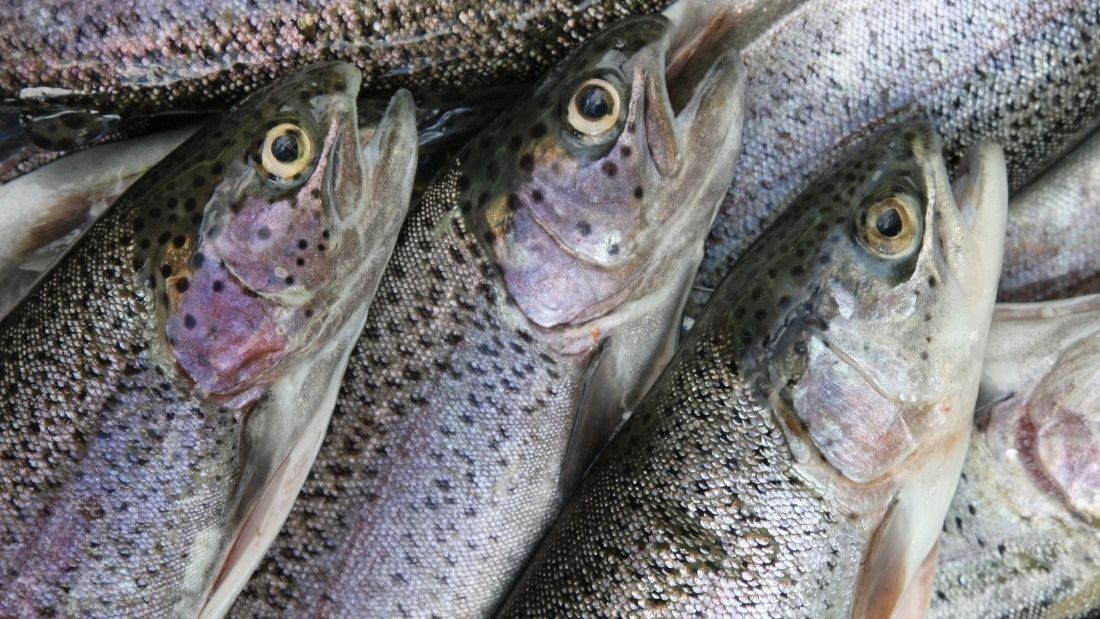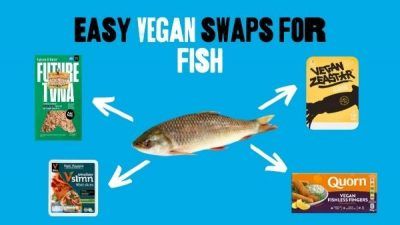Five reasons to forgo the fish

Even when they’ve decided to cut out meat and dairy, many people continue to eat fish believing that it is an essential part of a healthy diet. But the truth is, there is no evidence to suggest a diet including fish is superior to a wholefood plant-based one and, because of the five reasons below, it could actually be doing you more harm than good.
1. Mercury
Although some mercury occurs naturally in the environment, it’s human industrial activities that have really upped the amount of mercury in the environment, which ends up in lakes, rivers and the oceans where it is consumed by fish and other marine life. As big fish eat smaller mercury-containing fish, the mercury accumulates in their fatty tissue. This scientific review states that “human exposure occurs almost exclusively to MeHg [methylmercury] from consumption of fish and marine mammals.”
Mercury poisoning usually builds up slowly, over time, so if you eat fish you may not know how close you are to that toxic tipping point. It primarily affects the brain and nervous system, resulting in impaired cognition, anxiety and depression, tremors, numbness in the hands and feet and impaired vision.
Although we’ve been fed the claim that fish is good for our heart, some studies show that oily fish, and particularly fish oil supplements, can actually have the opposite effect. The American Heart Association says this might be explained by the damaging effects of methylmercury in fish. A study of men in Eastern Finland, where mercury levels in fish are high, found that the level of mercury in their hair and the amount of fish they ate were linked to an increased risk of cardiovascular death. In other words, those eating the most fish also had the highest levels of mercury in their hair and the highest levels of cardiovascular death.
2. PCBs
Polychlorinated biphenyls, or PCBs, are man-made industrial chemical pollutants that find their way into our waterways. They are so toxic that their use has been banned in many countries but unfortunately, they linger in the environment for a long time. In shallow water, sunlight can break PCBs down but when they are deposited in deep, dark water, this can take a very long time. When they persist in the oceans, they then get consumed by fish and other marine life… and then humans eat the fish. Some of the fish with the highest concentrations of PCBs include catfish, salmon, sardines and tuna.
PCB exposure has been linked to many diseases including cardiovascular disease, non-alcoholic fatty liver disease, impaired cognitive development in children, dementia and endometriosis.
3. Dioxins
Like PCBs, dioxins are another persistent organic pollutant (POP) produced from industrial chemical and manufacturing processes. However, they are even more toxic and stay in the environment even longer – sometimes decades.
Short-term exposure to dioxins can cause skin lesions, such as chloracne, and may damage the liver. In the long-term, dioxins are endocrine disruptors which means they may interfere with your hormones and have adverse effects on your reproductive and nervous system, immunity, may increase your risk of cancer and may affect development in children. In short, they are chemicals that can seriously damage your health!
According to the World Health Organisation, “more than 90 per cent of human exposure is through food, mainly meat and dairy products, fish and shellfish.”
4. Norovirus
Pollutants are not the only problem with eating marine animals. Filter-feeding shellfish, such as mussels and oysters, can accumulate bacteria and viruses from their environment and when eaten raw, can pose a direct threat to health.
Norovirus is one of them and can cause fever, nausea, vomiting, cramping and diarrhoea. Many outbreaks are linked to shellfish contaminated by human faecal sources. Contamination of bivalve shellfish, particularly oysters, with norovirus is recognised as a food safety risk, one study found 69 per cent of 630 oyster samples ordered from vendors across the UK were contaminated with norovirus.
5. Saturated fat
Yes, fish may contain some healthy, unsaturated fats but when you eat fish, you’re not just eating omega-3 fats, you’re also eating saturated fat and cholesterol, both of which are linked to heart disease. Just one serving of salmon can contain around 100 milligrams of cholesterol. Scientific studies (here and here) found that each 300 milligrams of cholesterol a day may increase the risk of heart disease by 16-17 per cent. When cardiovascular disease can “be prevented by a properly compiled plant-based diet” as this scientific review states, there really is no need to risk the saturated fat and cholesterol in fish when you can get your omega-3s from healthy and sustainable plant-based sources.
Fish is by no means an essential part of a healthy diet. We can get all of the good stuff (ie the omega-3s) from a daily dose of flaxseed and an algae-derived EPA and DHA supplement without any of the hidden nasties. If we can be just as healthy – or healthier – by forgoing fish, perhaps we should stop stripping the seas of life and reduce the suffering of trillions of fish every year. If you think farmed fish is the answer, see our Rainbow Trout investigation and our Lice-nsed to Kill campaign.







